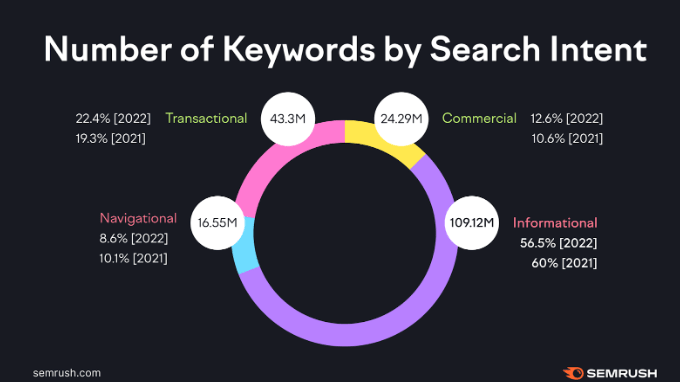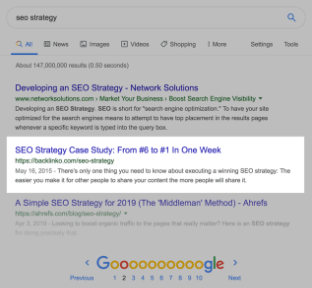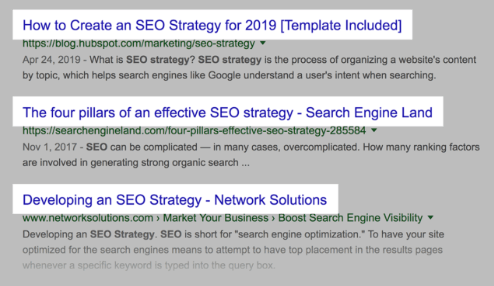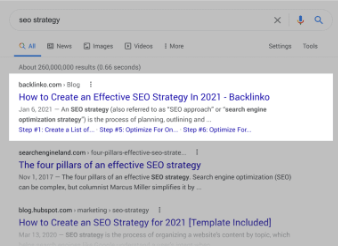The Impact of User Intent and User Experience On Modern SEO

The Impact of User Intent and User Experience On Modern SEO
The search engine optimization (SEO) space is constantly evolving as search engines refine their algorithms to ensure users find the right information they need, quickly.
The key idea behind search algorithm updates is to ensure user satisfaction.
One of the first approaches to this effect was focusing on the keywords the user searched for. Presently, however, the focus has changed to the intent behind each search and the user's experience while accessing information.
According to a Statista survey of SEO professionals, two of the three leading emerging SEO factors globally are connected to user intent and experience: Core Web Vitals (10.8%) and E-E-A-T (10.2%).
In addition, Semrush’s study showed an increasing shift toward transactional and commercial keywords in Google Search Engine Result Pages (SERPs).

From all this information, we see consistent SEO trends: an increasing prioritization of the user and providing value to the user.
Historically, as discussed earlier, SEO was mostly about using the right keywords as frequently as possible. That gave birth to unethical practices such as keyword stuffing and other spamming methods.
These methods worked for a while, making Google Search results a frustrating experience for users until multiple Search algorithm updates started actively tuning out low-quality results.
This article discusses how much the algorithm has changed and how SEO professionals can future-proof their strategies.
How Google Rates Results and Web Pages
Every SEO professional became familiar with Google’s search quality guidelines, usually summarised as ‘EAT’: Expertise, Authoritativeness, and Trustworthiness. Though not ranking signals, incorporating EAT principles in web content publishing to provide the most helpful content to users.
In 2022, Google introduced an additional factor, ‘Experience,’ which recognized the importance of first-hand real-life experiences to the credibility of many topics. That’s why, for instance, users trust the reviews of other customers over what a business claims about itself.
Similarly, Google launched Core Web Vitals in 2020, putting UX at the forefront of search engine optimization for the first time, focusing on website speed, responsiveness, and visual stability.
It followed the emerging trend of Google getting site owners and content publishers to put users first both in the content of their posts and also on the technical side. Since both SEO and UX now have the same goal – giving people what they are looking for in a user-friendly manner – it makes sense that both areas are now being merged.
The End of Keyword-Centric SEO
In 2024, the result of these increasing changes over the years is that SEO has completely shed its keyword-centric past. It’s impossible to game the algorithm solely by stuffing your content with the most popular keywords, even for highly niche fields.
As the shift away from keyword-centric SEO was in motion, some declared the death of SEO itself in certain quarters. However, SEO is certainly still alive. It simply evolved in the direction of serving the user, just like personalized marketing evolved in the age of e-commerce to displace traditional mass marketing.
SEO still matters but can no longer be done using traditional lenses. Previously, SEO was about answering the question, ‘What does the search engine want?’ SEO is now about answering the question, ‘What do users want?’. Hence, the emphasis is now on search intent (or user intent).
Google has made it its #1 goal to satisfy the intent behind users’ queries on its platform. Presently, the superpower of every SEO professional is to be able to predict intent and anticipate needs.
A New Direction for SEO Marketing
Viewing search queries as intent signals has implications beyond SEO; it matters for the entire marketing funnel. The key challenge is to know who your users are very well and identify what they need. By doing this, you optimize for visibility and expansion.
In most cases, determining search intent is as easy as checking out the content that ranks high for certain keywords. Those are the posts that the search engine algorithm thinks are most relevant to the user. By identifying the features of those posts, you can align your content better to fit user needs.
The goal remains clear: you want to serve the user better, not the search engine. This is how Brian Dean of Backlinko discovered that a well-written, well-researched piece of content wasn’t ranking as it should.
Upon research, he discovered that his post was rather specific, but the top-ranking posts approached the topic from a high-level perspective. He rewrote the content from the ground up and saw a change in ranking. The screenshots below show how his article went from being second on the second page of Google’s Search Engine Results Page (SERP) to being number one on the first page.
The first placement is his article from before it was re-written.

The screenshot below shows the top-ranking pages on the SERP for his keyword, ‘SEO strategy.’

The third screenshot shows that his article ranked number one on the first page after he studied the others and rewrote it.

AI’s Influence on SEO
It might be easy to follow those steps if you own a small business and manage a small website with a few pages and posts. However, if your website has hundreds or thousands of posts with millions of keywords you want to rank for, it’s impossible to go through the process manually.
This is where AI comes in. From the Statista survey mentioned earlier, the number one emerging SEO factor among professionals is machine learning/AI (11.3%), which is unsurprising given the trend since the rise of generative AI several months ago.
AI-powered SEO plugins and tools are useful for analyzing large volumes of data to discover user intent and patterns of behavior, which will, in turn, help you optimize your content and SEO strategy. After all, Google’s algorithm for ranking web pages is, at its core, made up of multiple AI technologies.
An emerging independent field of AI SEO that uses AI-based tools to enhance SEO tasks such as keyword research, content optimization, backlink analysis, schema markup creation, automation, and much more.
Future-Proofing Your SEO Strategy
To be clear, keyword research in SEO is still alive, but the goal has changed. To future-proof your SEO strategy, you must gear all your efforts toward satisfying the user. If this requires revamping your entire strategy, then so be it, but there must be a realignment of goals to ensure that your content matches what users want.
Hire a trusted SEO company on The Manifest.
